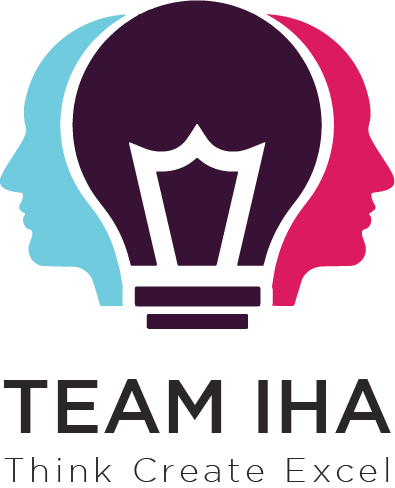The world of artificial intelligence is evolving at lightning speed—and OpenAI, the company behind the hugely popular ChatGPT, is leading that evolution with a bold new vision. According to a newly surfaced internal strategy document titled “ChatGPT: H1 2025 Strategy,” OpenAI is gearing up to transform ChatGPT into a powerful, all-in-one AI super assistant that not only chats with users but becomes a central interface for daily life and the internet itself.
Backed by Microsoft and already integrated across countless digital workflows, ChatGPT is now set to go from helpful chatbot to personalized life assistant—smart, emotional, and always ready to assist you at home, work, and everywhere in between.
Let’s take a deep dive into what OpenAI is planning—and how it could change how we interact with AI forever.
🤖 What Is an AI Super Assistant?
OpenAI’s plan is to build an AI companion that knows you intimately—your routines, preferences, needs, and behaviors—and then assist you in ways that go far beyond text generation.
This “super assistant” is envisioned to:
- Understand your habits and context
- Perform complex, multi-step tasks
- Serve as a trustworthy, emotionally aware guide
- Be your main interface to the internet
Unlike conventional AI assistants like Siri or Alexa, which respond to basic voice commands, OpenAI wants ChatGPT to become a true life assistant, seamlessly integrated into everything you do—from morning routines to high-stakes meetings.
🧠 Inside the Vision: “Help You With All of Your Life”
According to the leaked document (partially revealed during the U.S. Department of Justice’s antitrust case against Google), OpenAI’s plan reads like something from the future—but it’s already in motion.
The document outlines a world where ChatGPT is:
“Helping you with all of your life, no matter where you are.”
This includes:
- At Home: Playing music, answering questions, suggesting recipes, controlling smart home devices.
- On the Go: Navigating traffic, finding restaurants, organizing your calendar, messaging contacts.
- At Work: Summarizing emails, generating reports, taking meeting notes, helping with presentations.
- During Downtime: Offering relaxation tips, journaling support, personalized reflections, and entertainment.
This is not a chatbot that waits to be asked. It’s an AI assistant that proactively helps you get through the day.
🌐 Your Interface to the Internet
OpenAI also plans to turn ChatGPT into the main gateway through which users access online services.
That means ChatGPT could:
- Browse and interpret web pages for you
- Interact with third-party services and apps
- Make reservations, complete purchases, and fill out forms
- Act as your search engine, digital butler, and personal assistant—all in one
The idea is to remove friction. Why search, compare, and click when your assistant can do it all intelligently with a single command?
💬 Emotional Intelligence and Trustworthiness
Perhaps one of the most ambitious aspects of the super assistant plan is emotional intelligence. OpenAI wants ChatGPT to not just understand what you’re saying—but how you’re feeling.
Expect features like:
- Emotion detection through language and tone
- Adaptive communication styles based on mood
- Empathetic support and mental wellness features
- Smart recommendations tailored to your emotional state
In a world where digital interactions are often cold or impersonal, ChatGPT could become a warm, thoughtful presence in your day-to-day life.
📱 Going Beyond the Screen: ChatGPT-Powered Hardware?
A truly always-on super assistant can’t just live in your browser or phone app. That’s why OpenAI has also made moves toward AI-powered hardware.
In a major announcement, OpenAI revealed a $6.4 billion acquisition of Jony Ive’s AI device startup, “io,”. Ive, the legendary former Apple designer, is known for helping shape the iPhone—and now he’s set to design the physical form of OpenAI’s future.
Possible devices could include:
- Wearables with real-time ChatGPT integration
- Smart home hubs or desktop assistants
- Augmented reality (AR) glasses with AI overlay features
This hardware will be crucial to bringing the super assistant to life in physical spaces—and not just through screens.
🛠️ What Tasks Could the Super Assistant Handle?
OpenAI imagines a world where the ChatGPT super assistant can:
- Organize your travel plans
- Schedule your meetings
- Manage your to-do lists
- Shop online with your preferences in mind
- Communicate across email, messaging, and even social media
- Offer coaching, writing, editing, and brainstorming assistance
Essentially, anything a smart, tech-savvy human with a computer could do, your ChatGPT assistant should be able to do too.
🔄 The Evolution of AI Interaction
This marks a major pivot from passive AI tools to proactive AI partners.
Before:
🧠 Ask ChatGPT → Get an answer
Now:
🧠 ChatGPT knows what you need → Offers help before you ask
This shift will make AI feel less like software and more like a co-pilot for life.
📈 What It Means for the Future of AI
OpenAI’s plans signal a broader industry trend: hyper-personalization through AI. With ChatGPT at the forefront, we’re seeing the dawn of:
- More context-aware AI
- Voice and multimodal interfaces (text, image, voice)
- AI that becomes part of your daily habits, not just your queries
- An AI that’s always on, always present—and always yours
The real goal? To build an AI assistant you trust, rely on, and even form a relationship with—a true digital companion.
Final Thoughts: A Personal Assistant for the AI Age
As 2025 approaches, OpenAI is pushing ChatGPT into uncharted territory—not just as a product, but as a paradigm shift in how we live with AI.
If successful, the ChatGPT super assistant could do for AI what smartphones did for the internet: make it personal, ever-present, and essential.
From handling tasks to understanding emotions and helping you in every part of your life—ChatGPT is being redesigned to become not just useful, but truly indispensable.

